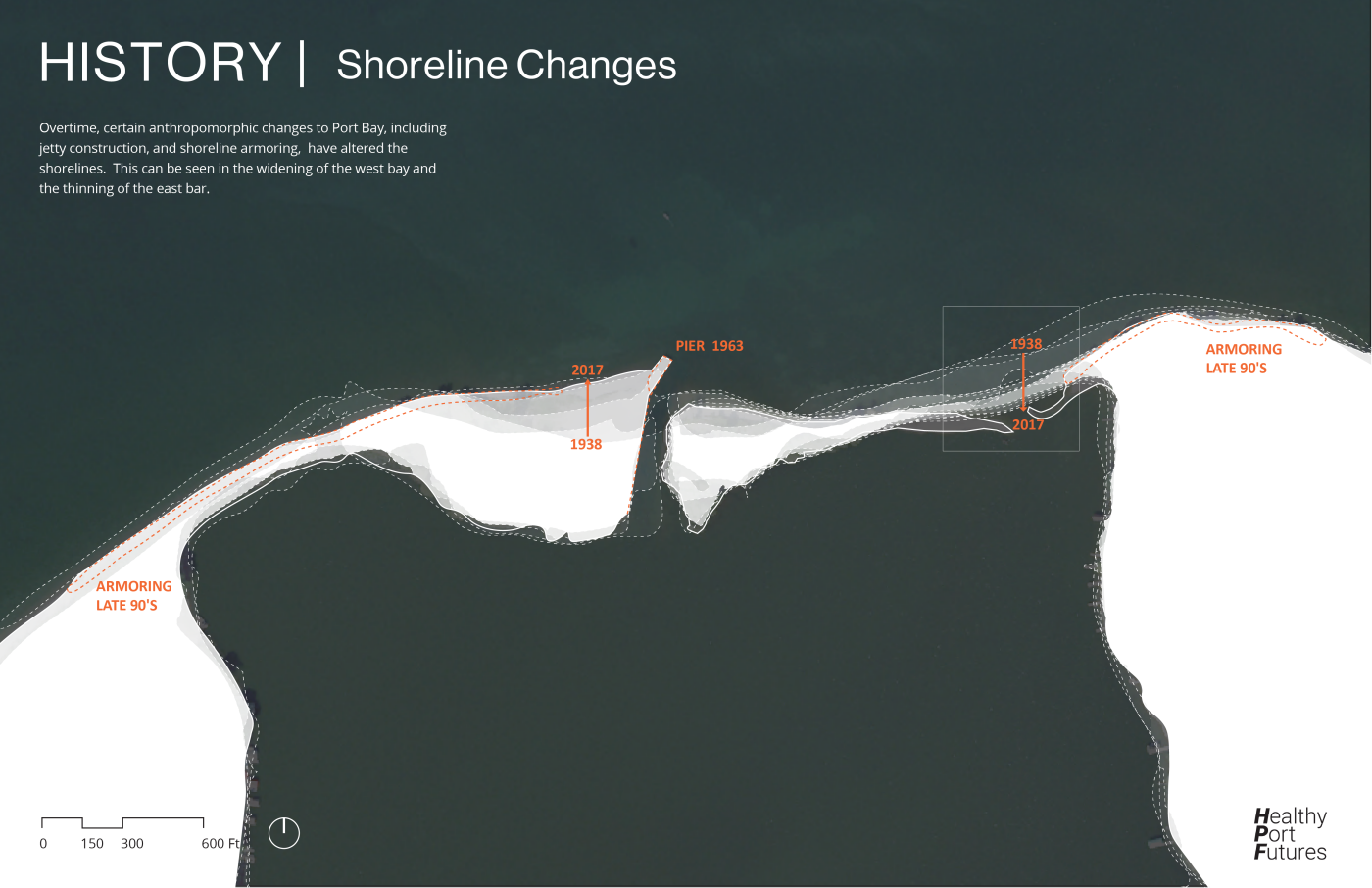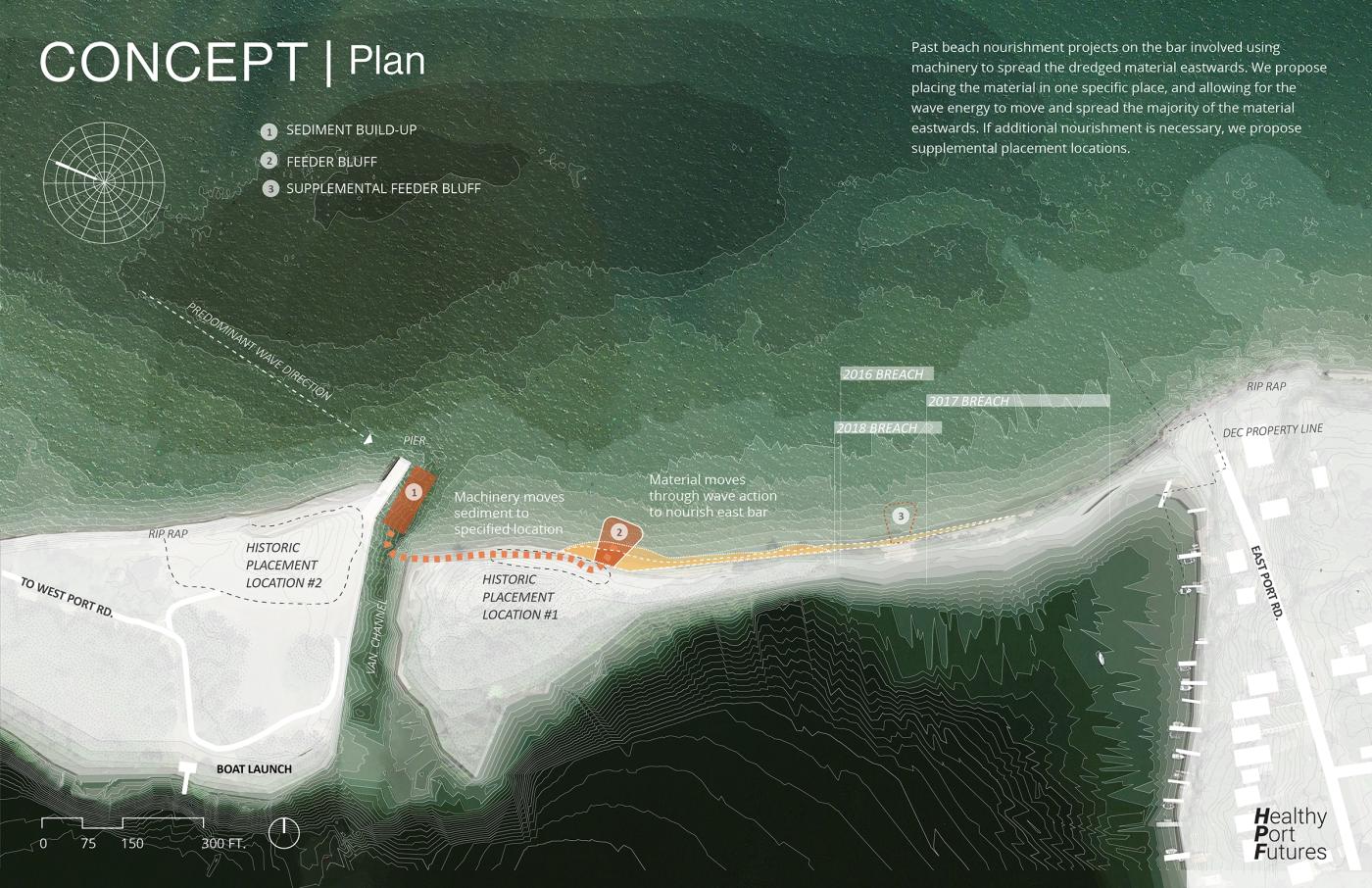
HEALTHY PORT FUTURES DESIGN RESEARCH LEADS INNOVATIVE SHORELINE PROTECTION PROJECT IN GREAT LAKES REGION
Led by UVA School of Architecture Associate Professor of Landscape Architecture, Brian Davis, and University of Pennsylvania Assistant Professor of Landscape Architecture, Sean Burkholder, in collaboration with research associate Tess Ruswick, Healthy Port Futures (HPF) is an interdisciplinary research project that explores the potential for landscape design to better produce, manage, operate, and cultivate rivermouth landscapes over time.

Healthy Port Futures (HPF) is a $1.6 million, 3-year project funded by the Great Lakes Protection Fund. The project works with communities as well as state and federal agencies throughout the Great Lakes region to develop innovative designs for sedimentary landscape practices to improve human and ecosystem health.
The pilot project in Port Bay, NY, started in April 2020, is one of a series of harbors between Great Sodus Bay and Little Sodus Bay on Lake Ontario. The region is characterized by alternating drumlin bluff and baymouth barriers and is one of the last remaining long stretches of shoreline that hasn’t been armored. Port Bay has witnessed erosion and thinning of its sediment-starved eastern bar since a jetty and permanent boat channel were built in the early 1960s. In the past three years, the eastern bar has been breached multiple times, causing rising water levels, flooding, and repetitive threat to the boats and docks housed there.

Working closely with the New York State Department of Environmental Conservation (DEC), the Wayne County Soil and Water Conservation District, and Port Bay Improvement Association (PBIA), Healthy Port Futures developed the design, implementation, and monitoring of a passive dredge management project. This included the creation of a large, bell-shaped landform (some 65’ long, 11’ high, and 40’ wide) in collaboration with the dredging contractor, Decker Excavation. This erodible landform was created with material dredged from the local channel and placed to nourish the barrier bar which susceptible to erosion by predominant waves.
Aimed at developing a responsive dredge maintenance methodology, the Port Bay pilot project allowed Healthy Port Futures to identify the initial landform placement and a sequencing plan through research, physical modeling, and iterative design. Data collection and monitoring through drone imagery and survey techniques by the team and local partners have suggested that the feature eroded quickly and nourished the weakest parts of the bar, with very little sediment lost offshore.
The Healthy Port Futures team plans to implement and monitor the project again next year, while including community education efforts, remote sensing, and habitat monitoring. The longer-term monitoring goals of the project will provide critical insight into how material placed in the nearshore environment around Port Bay moves in response to wave and wind energy; and will aid in the future placements of landforms to reduce shoaling in the managed channel, while fortifying the weaker areas of the bar that is prone to larger failures. As each year Port Bay is dredged at a similar time by the same contractor the shape and location of dredge material placement will be able to be calibrated utilizing a methodological approach that is responsive and adaptive, a tenant that is at the core of this innovative shoreline protection project.
Images © : Healthy Port Futures (Brian Davis, Sean Burkholder, Tess Ruswick


